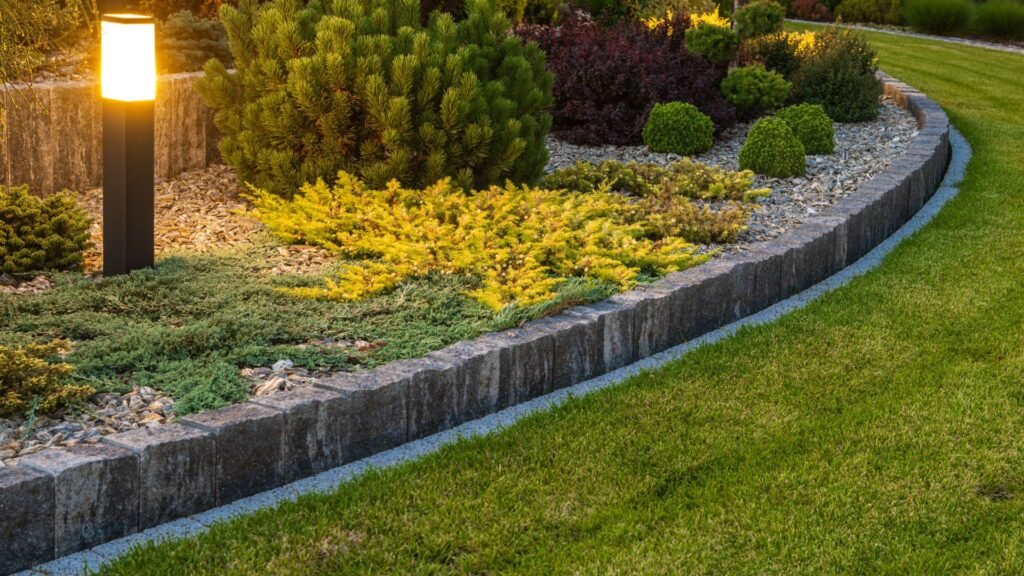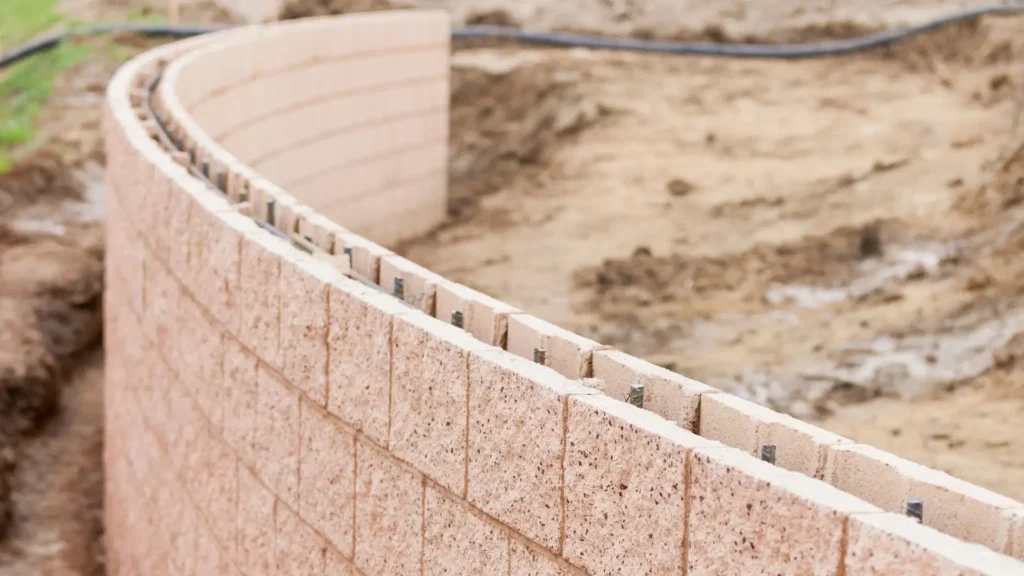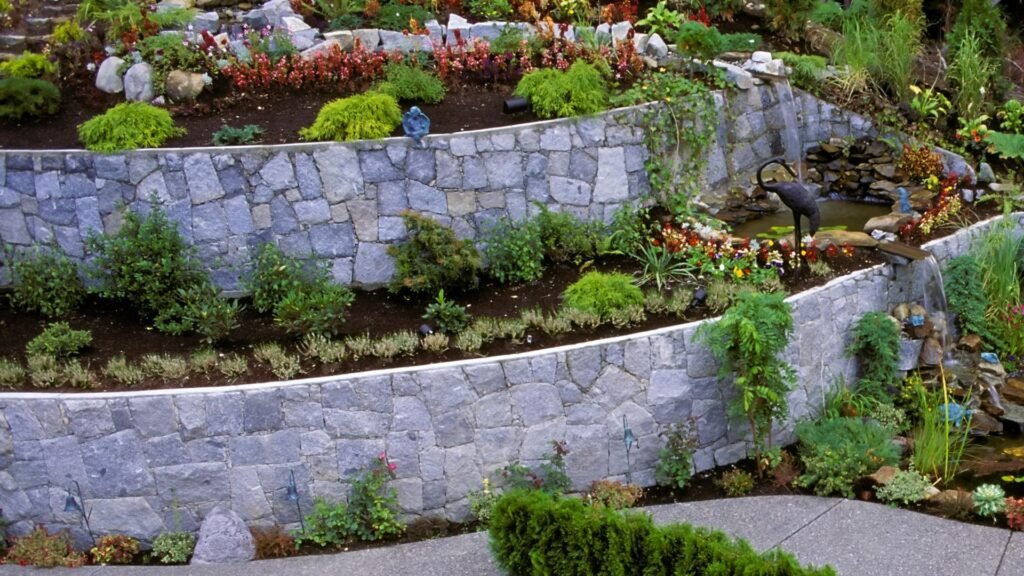Welcome to your complete guide to understanding the cost of retaining walls in New Zealand. Whether you’re reshaping your garden, dealing with a sloped section, or building a sturdy boundary, knowing what to budget for is key. Retaining walls aren’t one-size-fits-all — prices vary depending on the size, materials, site conditions, and whether you build it yourself or hire a professional. In this guide, you’ll find clear insights on average costs, factors that drive the price up or down, and practical tips to help you plan without overspending. By the end, you’ll have a solid idea of what to expect and how to make the right decisions for your property and budget.
The cost of a retaining wall in NZ typically ranges from $250 to $600 per metre, depending on the size, materials, and site conditions. Timber walls are often the most affordable, while concrete or stone options cost more but last longer. Always factor in labour, drainage, and permit fees for an accurate estimate.
Table of Contents
Average Cost Of A Retaining Wall In NZ
When planning a retaining wall, one of the first questions homeowners ask is: how much will it cost? In New Zealand, the cost of building a retaining wall can vary widely depending on the material, size, and complexity of the project. On average, you can expect to spend between $250 and $600 per linear metre. Smaller, simple timber walls are usually at the lower end of the scale, while more complex concrete or stone walls will cost more.
General Cost Range
The average price range per linear metre is as follows:
- Timber retaining wall: $250 – $350 per metre
- Concrete retaining wall: $400 – $600 per metre
- Stone or brick retaining wall: $500 – $800 per metre
- Gabion retaining wall: $350 – $500 per metre
Typical Cost For Small Vs. Large Walls
- Small garden walls (under one metre high) can often be built for as little as $1,500 to $3,000.
- Medium-sized walls (1–1.5 metres high) usually range from $4,000 to $8,000 depending on materials and site conditions.
- Large or engineered walls (over 1.5 metres high) often start around $10,000 and can exceed $20,000 for complex designs.
Quick Cost Summary Table
| Type of Wall | Average Cost Per Linear Metre | Suitable For |
| Timber | $250 – $350 | Budget-friendly residential projects |
| Concrete | $400 – $600 | Durable, long-lasting walls |
| Stone or Brick | $500 – $800 | Premium, decorative landscaping |
| Gabion | $350 – $500 | Eco-friendly or rustic designs |
Understanding the average costs of retaining walls in New Zealand helps you create a realistic budget for your project. Whether you are building a small garden feature or a large structural wall, knowing the expected price range allows you to plan confidently and avoid unexpected expenses.
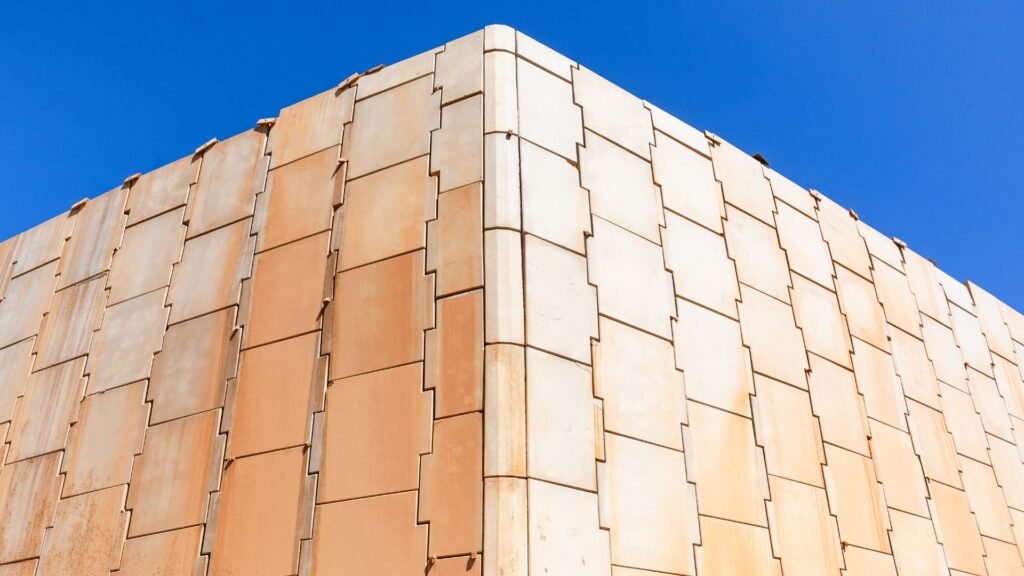
Factors That Affect Retaining Wall Costs
Understanding what drives the cost of a retaining wall in New Zealand can help you plan your project more accurately. Prices aren’t fixed because every wall is unique. From the size and materials to the complexity of the site, many factors can change your final bill. Here’s a detailed breakdown of what you should consider.
Size And Height Of The Wall
The size and height of your wall are the biggest cost drivers. Taller or longer walls require more materials, more labour, and sometimes additional engineering support to handle the weight of the soil. For example, a small garden wall may cost less than $2,000, while a high, reinforced wall for a sloped section could exceed $10,000. As a general guide, a 1-metre-high timber wall may cost around $250 per metre, while a reinforced concrete wall can go beyond $600 per metre.
Material Choice
The type of material you choose has a major impact on price and durability.
- Timber is budget-friendly and easy to install, but it doesn’t last as long as other options.
- Concrete offers durability and strength, ideal for structural needs.
- Stone or brick provides a premium look but comes at a higher cost.
- Gabion walls are mid-range in price and eco-friendly, often using natural stones.
Choosing the right material is about balancing your budget with your long-term goals.
Site Conditions
Every property is different, and site conditions can make or break your budget.
- Sloped sites often require extra excavation and structural support.
- Poor soil quality may need reinforcement or drainage systems.
- Limited access to your site can also increase labour time and equipment costs.
Addressing these issues early prevents delays and extra expenses during construction.
Labour Costs
Labour can account for a significant portion of your budget. Hiring a professional contractor ensures safety, compliance, and quality, but it comes at a price. Depending on your region, labour rates can range from $50 to $100 per hour. DIY is an option for small, simple walls, but mistakes can lead to costly repairs or safety hazards. For complex builds, a qualified contractor is often worth the investment.
Council Permits And Engineering
Certain walls require approval from your local council, especially if they are over 1.5 metres high or support a driveway, building, or significant load. Permit fees and required engineering reports can add anywhere from a few hundred to several thousand dollars to your total cost. Checking with your council early in the planning stage saves time and avoids costly compliance issues later.
Knowing these factors upfront helps you create a realistic budget and avoid financial surprises. By carefully planning the size, materials, and labour while accounting for permits and site conditions, you can build a retaining wall that fits your needs and your budget.
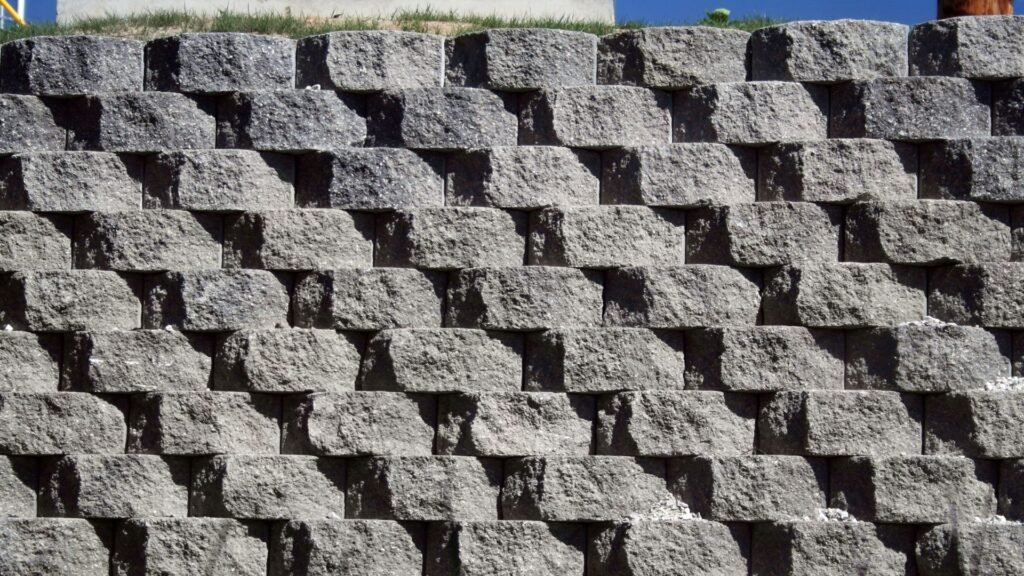
Breakdown By Retaining Wall Type
When planning a retaining wall, the type you choose plays a major role in the overall cost, appearance, and durability of your project. In New Zealand, four popular options stand out: timber, concrete, stone or brick, and gabion walls. Below is a detailed explanation of each type, along with its pros, cons, and average pricing to help you make the best choice for your needs.
Timber Retaining Walls
Timber is one of the most affordable and widely used materials for retaining walls in NZ. It is easy to source, simple to install, and perfect for smaller residential projects. Treated pine or hardwood timber is usually used to protect against moisture and pests.
Pros:
- Budget-friendly and quick to install
- Works well for low to medium-height walls
- Easy to repair or replace damaged sections
Cons:
- Shorter lifespan compared to concrete or stone
- Requires regular maintenance and treatment to prevent rot
- May not handle extreme loads or very wet conditions
Average Cost Table:
| Wall Height | Approximate Cost per Metre |
| Up to 1m | $250–$350 |
| 1m–1.5m | $300–$450 |
| Over 1.5m | $400–$500 |
Concrete Retaining Walls
Concrete walls are known for their strength and durability, making them ideal for long-term projects or areas with high soil pressure. They can be constructed using poured concrete, blocks, or precast panels, depending on the project design.
Pros:
- Extremely durable with a lifespan of 40+ years
- Low maintenance once installed
- Handles heavy loads and challenging terrain
Cons:
- Higher upfront cost compared to timber
- Requires professional installation
- Less flexible in design unless rendered or clad
Average Cost Table:
| Wall Height | Approximate Cost per Metre |
| Up to 1m | $400–$600 |
| 1m–1.5m | $500–$750 |
| Over 1.5m | $700–$1000 |
Stone Or Brick Retaining Walls
Stone and brick walls offer a premium, timeless look that adds value and character to any property. They are durable and blend well with natural landscapes or modern designs.
Pros:
- Elegant and visually appealing
- Very long lifespan with minimal maintenance
- Highly durable in all weather conditions
Cons:
- Most expensive option due to materials and labour
- Longer installation time
- Requires experienced builders for proper construction
Average Cost Table:
| Wall Height | Approximate Cost per Metre |
| Up to 1m | $500–$800 |
| 1m–1.5m | $700–$1200 |
| Over 1.5m | $1000–$1500 |
Gabion Walls
Gabion walls use wire mesh cages filled with rocks or recycled materials. They are a versatile, eco-friendly solution that works well in both residential and commercial settings.
Pros:
- Environmentally friendly and uses recycled materials
- Allows for good drainage, reducing pressure behind the wall
- Easy to build and maintain
Cons:
- Requires regular checks on wire mesh integrity
- Can look industrial without landscaping or plants to soften appearance
- Not always ideal for very tall walls
Average Cost Table:
| Wall Height | Approximate Cost per Metre |
| Up to 1m | $300–$500 |
| 1m–1.5m | $400–$600 |
| Over 1.5m | $600–$900 |
Choosing the right retaining wall type depends on your budget, design preferences, and the demands of your site. Whether you go for the affordability of timber, the strength of concrete, the beauty of stone, or the sustainability of gabion, planning ahead will help you build a wall that meets your needs and stands the test of time.
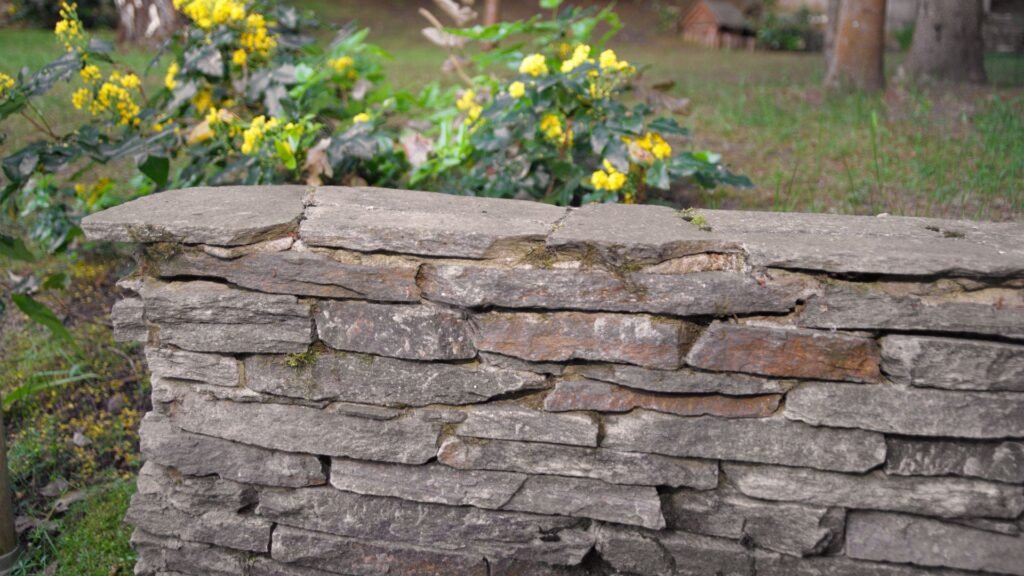
DIY Vs. Hiring A Professional
Building a retaining wall can seem like a manageable weekend project, but the decision between doing it yourself and hiring a professional affects cost, safety, and the long-term durability of the structure. Understanding these differences helps you choose the best approach for your budget and your property needs.
Cost Differences
DIY projects can initially appear more affordable. You save on labour costs, which can range from $50 to $100 per hour in New Zealand. Materials like treated timber, concrete blocks, or gabion baskets are readily available from hardware stores, and you only pay for what you need. For a small, simple wall under one metre high, the savings can be significant.
Hiring a professional, however, provides added value. The upfront price includes labour, site preparation, drainage installation, and sometimes even design advice. Professionals often have access to better-quality materials at trade prices, and the build is faster and less stressful. While the cost might be higher, the long-term benefits often outweigh the initial savings.
Risks Of DIY (Safety, Engineering)
DIY retaining walls carry several risks, especially for taller or load-bearing walls. Without proper engineering, a poorly built wall can collapse, causing property damage or even injuries. Drainage is another critical factor that DIY builders often overlook, which can lead to water buildup, pressure issues, and early wall failure.
There are also safety hazards with heavy lifting, excavation work, and the use of tools or machinery. These risks can lead to unexpected expenses or even fines if council regulations are breached.
When It’s Worth Hiring A Pro
Hiring a professional is the smarter choice when the wall is over 1.5 metres, supports a driveway or structure, or is part of a larger landscaping plan. Professionals bring expertise in design, engineering, and compliance with local council regulations. They also provide warranties for their work, giving you peace of mind that your investment will last for decades with minimal maintenance.
If your budget allows and the wall is complex, working with a licensed builder or engineer ensures the project is done safely, efficiently, and to a high standard.
Deciding between DIY and hiring a professional depends on your budget, skills, and the size of the project. For small, straightforward walls, a DIY approach can work if you follow guidelines carefully. For larger or more complex builds, hiring a professional guarantees safety, compliance, and a result that adds real value to your property.
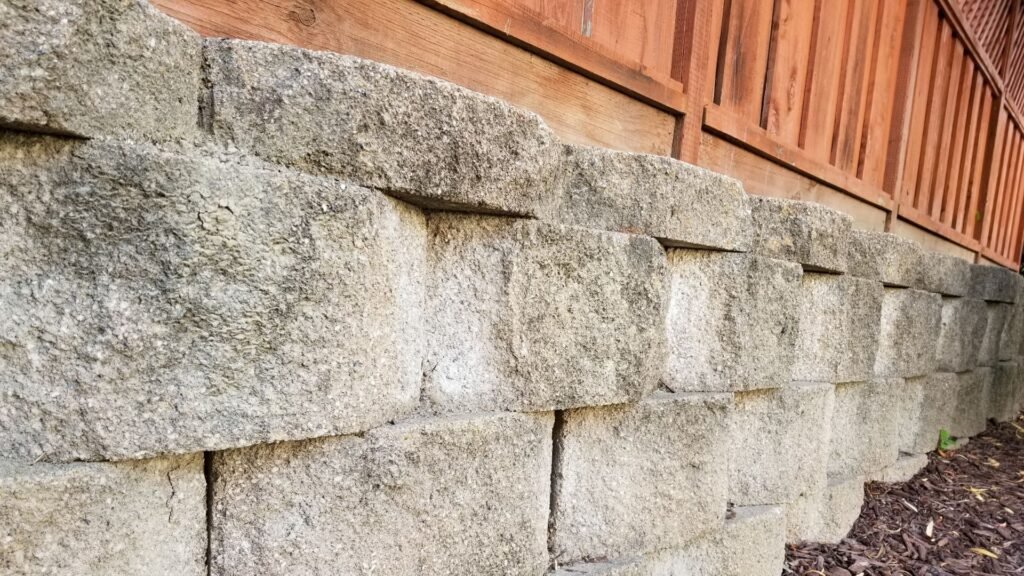
Extra Costs To Consider
When planning the cost of a retaining wall in NZ, it’s important to look beyond just the materials and labour. Several extra costs often come into play, and understanding these will help you create a more accurate budget and avoid unpleasant surprises.
Drainage Systems
Proper drainage is crucial for the stability and longevity of your retaining wall. Without it, water can build up behind the wall, causing pressure that leads to cracks, leaning, or even collapse. The cost of adding a drainage system can range from a few hundred dollars for simple pipe installations to several thousand dollars for more complex sites. Investing in good drainage now will save you expensive repairs later.
Site Preparation And Excavation
Before construction begins, the site often needs to be cleared and prepared. This may involve removing vegetation, levelling the area, or excavating soil to create a solid foundation. Site preparation costs depend on the size of your project and the condition of the land. A flat, clear site might need minimal work, while sloped or rocky areas can significantly increase the cost.
Design Or Engineering Fees
For taller walls or those supporting heavy loads, you may need a professional engineer or designer. These experts ensure your wall meets safety regulations and performs well over time. Design or engineering fees can range from a few hundred to several thousand dollars, depending on the complexity of your wall. Although it adds to your initial cost, this step ensures your project is both safe and compliant with NZ building codes.
Maintenance Over Time
Even the best-built retaining walls require some upkeep. Timber walls may need treatments to protect against rot, while concrete or stone walls should be checked for cracks or movement. Budget for periodic maintenance to extend the life of your wall and avoid costly repairs down the line. A small annual investment in maintenance can prevent the need for full replacements in the future.
Taking these extra costs into account will help you set a realistic budget and ensure your retaining wall is strong, durable, and built to last.
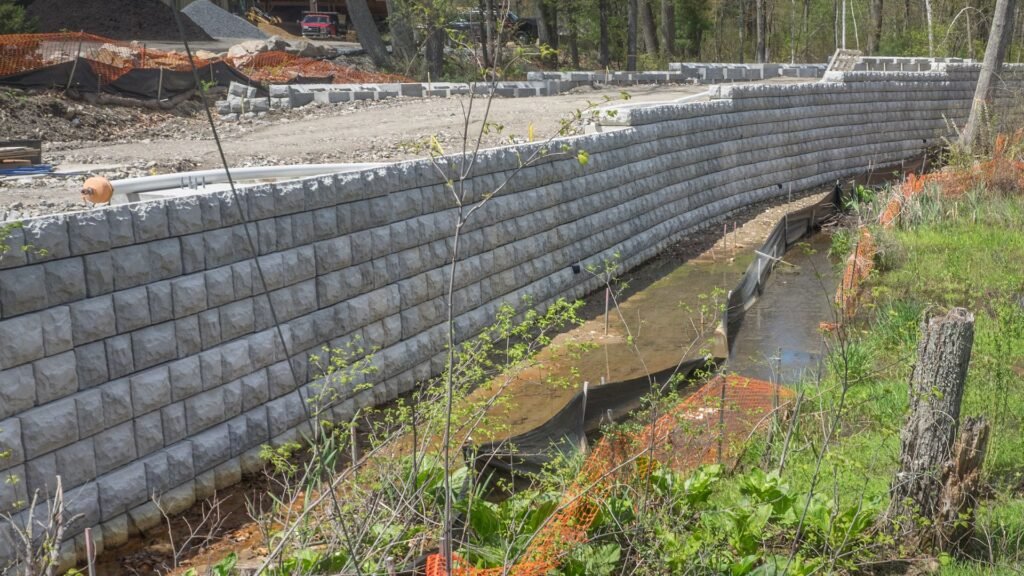
Tips To Save Money Without Cutting Corners
Building a retaining wall in New Zealand can quickly become expensive if you’re not strategic with your planning. The good news is, there are smart ways to cut costs while still ensuring your wall is strong, durable, and up to standard. Here’s how you can save money without compromising quality.
Get Multiple Quotes
Never settle for the first quote you receive. Prices can vary widely between contractors, even for the same scope of work. Contact at least three reputable builders or landscaping companies and compare their pricing, timelines, and included services. This helps you find the best balance of cost and expertise while avoiding hidden fees or unnecessary upsells.
Combine Projects
If you’re planning other outdoor work, such as installing fencing, decking, or landscaping, consider bundling the projects. Combining jobs often reduces labour costs and ensures the contractor can work more efficiently, saving you both time and money. For example, building a retaining wall alongside a new fence installation could significantly lower the total cost per project.
Use Readily Available Materials
Choosing locally available materials can save a lot on transportation and supply costs. Timber and concrete are often easier to source in New Zealand, making them more affordable options compared to imported stone or specialty materials. Always ask your contractor about cost-effective materials that still provide the durability and look you want.
Plan During Off-Peak Seasons
Contractors are typically busier during warmer months, which can increase labour rates and delay project timelines. Scheduling your retaining wall project during the off-peak season, like late autumn or early winter, can help you secure better prices and faster completion times. Just ensure weather conditions are suitable for the type of wall you’re building.
Smart planning and strategic choices can significantly reduce the overall cost of your retaining wall project. By comparing quotes, combining tasks, selecting cost-effective materials, and timing your build wisely, you can create a durable wall that fits your budget without cutting corners.
Ready to start your project? Get expert advice and a tailored quote today — visit our homepage to explore your options and plan your retaining wall with confidence.
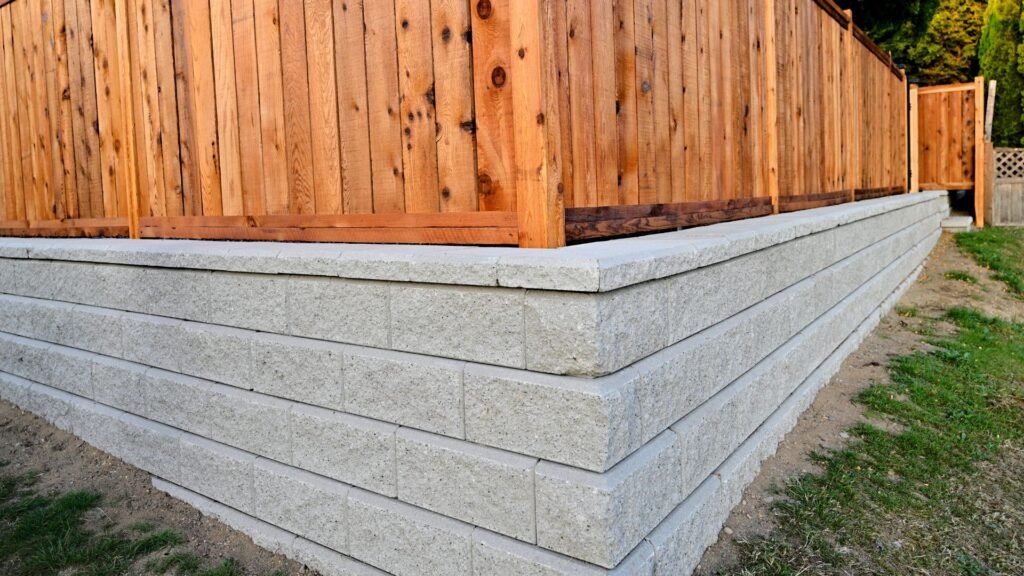
FAQs: About Cost Of Retaining Wall In NZ
What is the average cost of a retaining wall in NZ?
The average cost ranges from $250 to $600 per metre, depending on the material, size, and site conditions. Timber is usually the cheapest option, while concrete or stone walls are more expensive but last longer.
What factors affect the cost of building a retaining wall?
Key factors include wall height and length, material type, soil conditions, drainage needs, labour rates, and permit or engineering fees.
Do I need a permit for a retaining wall in NZ?
Yes, you usually need a permit if your wall is over 1.5 metres high or if it supports a driveway or structure. Check with your local council for specific requirements.
How long does a retaining wall last?
Timber walls typically last 15–20 years, while concrete or stone walls can last 40–50 years or more with proper maintenance.
Can I build a retaining wall myself to save money?
DIY can save money for smaller, simple walls, but larger walls or those needing engineering support should be handled by professionals for safety and compliance.
What’s the cheapest type of retaining wall in NZ?
Treated timber retaining walls are generally the most budget-friendly option, making them popular for residential projects.
How much does labour cost for a retaining wall?
Labour costs vary by region and complexity but typically range from $50 to $100 per hour. Always get multiple quotes to compare rates.
Are there extra costs I should plan for?
Yes, budget for site preparation, drainage, design or engineering fees, permits, and ongoing maintenance to avoid surprises.
How can I reduce the cost of a retaining wall?
Use readily available materials, plan during off-peak seasons, and get at least three quotes. Combining projects, like fencing and retaining walls, can also lower costs.
What is the best material for a retaining wall in NZ?
The best material depends on your budget and goals. Timber is affordable, concrete is durable, stone offers a premium look, and gabion walls are eco-friendly and versatile.
Conclusion
A retaining wall can fit most budgets, whether you’re looking for a simple timber wall for a small garden or a durable concrete structure for a larger project. The key is to understand your needs, compare material and labour options, and get a tailored quote from a trusted professional. By planning ahead, you can manage your expenses more effectively and avoid unexpected costs during construction. With the right approach, you can build a retaining wall that not only supports your property but also adds lasting value without breaking the bank.


